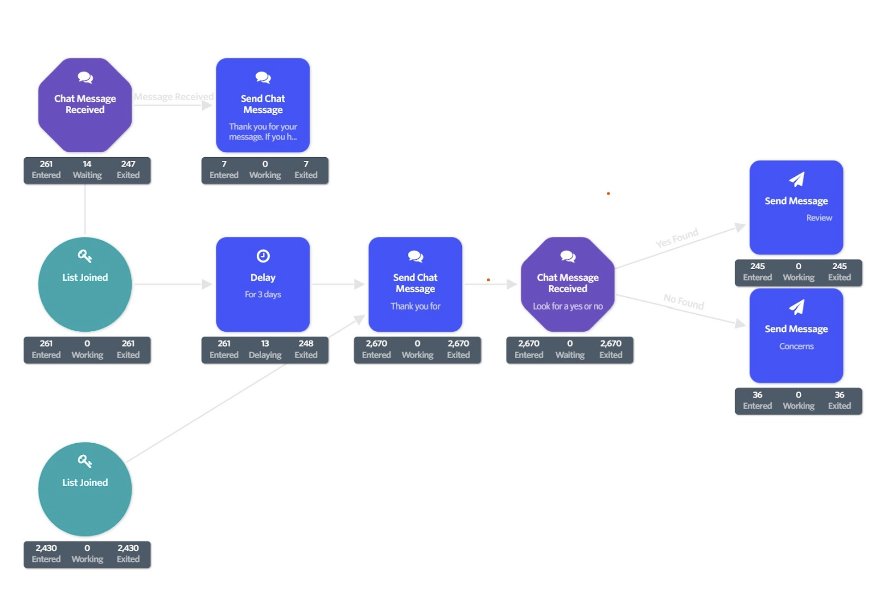Utilizing Segmented Customer Lists For Better 1st Party Targeting
Corkboard Concepts segments data for better audience modeling. What does this mean and why is it important?
Well-detailed 1st Party Audience contact lists have become increasingly important as pixel-based targeting continues to be phased out. A lot of the automated targeting that pixels allow for – like Remarketing – is still available with list-based targeting, businesses just have to be aware of targeting.
In order to target based on a customer list, it comes down to “matching” your list to what a platform knows about a person. This can be done with ANY of the following, with varying degrees of success in match rates:
- Mobile phone number – this is becoming one of the most prevalent ways of targeting as more platforms require only mobile phone numbers to sign up.
- Email Address – this is historically one of the most popular ways of matching from contact list to platform because it has historically been the #1 item to capture for contact lists and for platforms.
- Name + Zip Code – this has slightly less of a success rate but is generally widely available.
- Physical Address / Geofencing – this is limited by the platforms that can deliver but using geofences is a great way to target businesses or households, which allows an advertising message to the target, not just the individual but other influential people in their lives (i.e. coworkers or family members)
The primary point of first-party data targeting is to enable a business or organization to target using information that is owned by them. It’s leveraging Owned Media to promote your Paid Media strategies. Let’s take a look at some basic items for ensuring better usage of first-party data through segmenting lists:
1. Ensuring Positive Brand Sentiment
Have all past customers had the same experience?
Every person, business, or organization has good days, and they all equally have bad days. Understanding this is a great way to craft future marketing messages to these customers.

If your organization is working with any type of email service provider or review software that allows you to check the sentiment of a customer, this not only provides powerful insights for future communication but provides the gold standard for creating audiences. When matching similar behaviors and interests on platforms like Facebook, it is really helpful to model these after people that have had the most positive experience with your brand possible.
Consider the alternate scenario. There are past customers in a list that you have, but an overwhelming amount of people with negative sentiments towards your business. You may have other issues in this scenario, but let’s focus on just the audience modeling. This is uploaded and then matched to similar users. So networks are now matching audiences, for you to put paid advertisements in front of, that are similar to, or most closely match, people that are overwhelmingly dissatisfied with your product or service. More to come on this point at the end!
2. Breaking Down Customer Lists By Brands or Services
Another way to get a really good understanding of targeting and behaviors is by segmenting brands and services. Powersports is a single industry, but in it, you have on-road and off-road buyers which are totally different. You then have brand loyalties with some customers preferring Kawasaki over Honda. This can be applied across product lines, brands, services, and more. Segmenting based on this buyer preference helps take the guesswork out of matching.

3. Building Audiences Off Of Spend
Are all past purchases equal?
Past purchases tell a lot about a customer’s interactions with a brand. Small purchases vs. large purchases or one-time buyers vs. repeat buyers may tell of completely different habits, intentions, and loyalty when it comes to messaging.
Return on Ad Spend (ROAS) is a crucial part of advertising but the calculation becomes a lot easier when you’re looking at higher ticket items. Building look-a-like audiences of buyers that spend over a certain dollar threshold could be the difference between expanding your customer base to more people looking for a new motorcycle versus a container of oil. Using these dollar thresholds in your list segmentation can help to ensure that you’re going after higher-value customers – when that matters for your business.
Similar to total spending, you can also look at lists based on the number of products they’ve bought over time. This will give you a similar outcome in your list segmentation as ensuring positive brand sentiment but instead of asking people if they’re happy with your products/service – you’re making an assumption about their continued patronage.
4. Targeting Based On Buyer Journey
Are the contacts being uploaded Prospect, Recent Buyers, Past Buyers, or Repeat Buyers?
This is an important question to look at. Each of these has a significance when targeting but different appeal and factors into targeting differently. Utilizing prospective buyers and/or lead lists allows you to form two different audiences.
Depending on a business’s close rate, there are likely to be many more leads than closed sales – so a lookalike audience of leads will give you a broader view of targeting behaviors which allows for a higher level of audience expansion. A smaller Closed-Won list will give you a better, yet more narrow view of past purchasers.
It’s important to back up here as well because we don’t have to just activate our segmented data for lookalike audiences – let’s start hitting them 1:1 with remarketing to move them through the funnel and promote interactions!
5. Utilizing Exclusion Audiences
Who DON’T you want to target in this campaign?
Exclusion audiences are often overlooked but are one of the most important factors in efficient campaign management. Just like keyword, behavior, or country exclusions that can be used in platforms like Google Ads and Facebook Ads, uploading audience lists to exclude in campaigns supports targeting efficiency, optimization, and organization.

Exclusions also better support ongoing optimization by excluding those who you don’t want to match with or continue to optimize to. Consider a conversion-based optimization tactic that’s continuing to optimize to form fills but you, as a business, have a list of leads that are wasted or are not capable of converting – take these out of the equation from the start. Platform-based optimization tactics only pass back information from the point of conversion (i.e. form fill) and need manual optimization for offline interactions further down the funnel.
Exclusion audiences are also helpful for organizations as well. Some campaigns rely on maintaining frequency and top-of-mind awareness with current customers for things like ongoing service sales – and then you may not want to use general exclusion lists – however, that same organization may have prospecting-based campaigns where the exclusion of current customers is a necessity.





